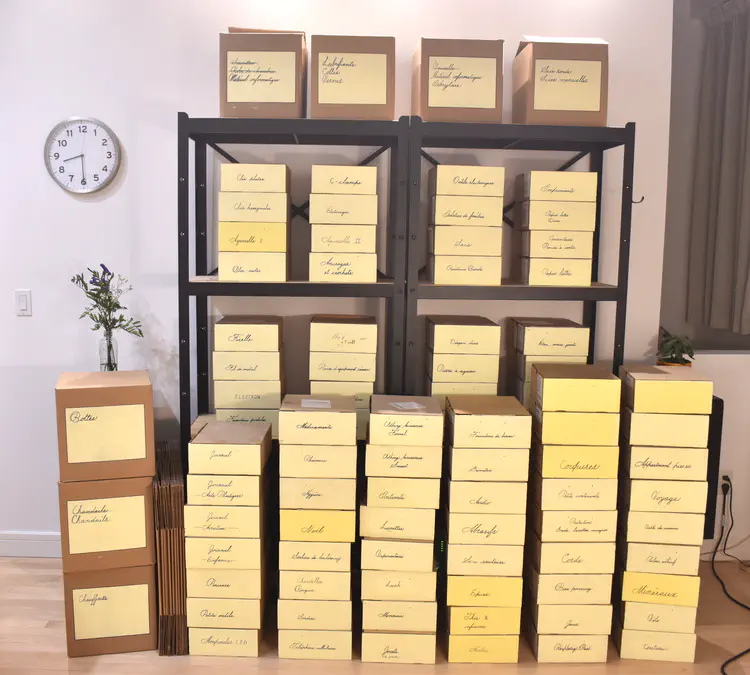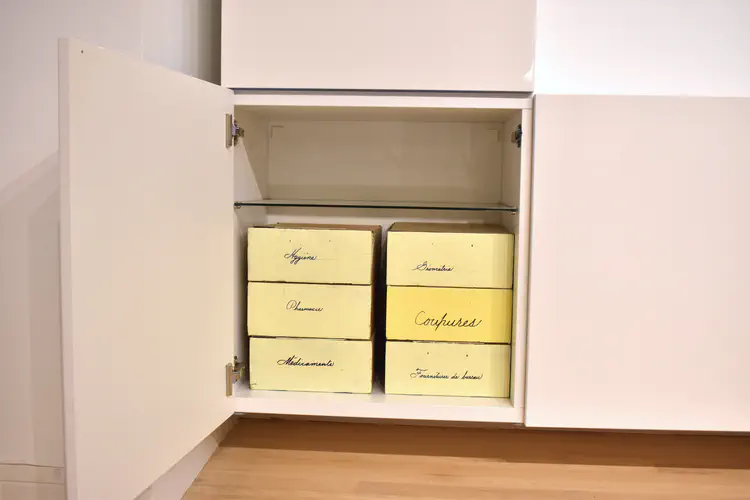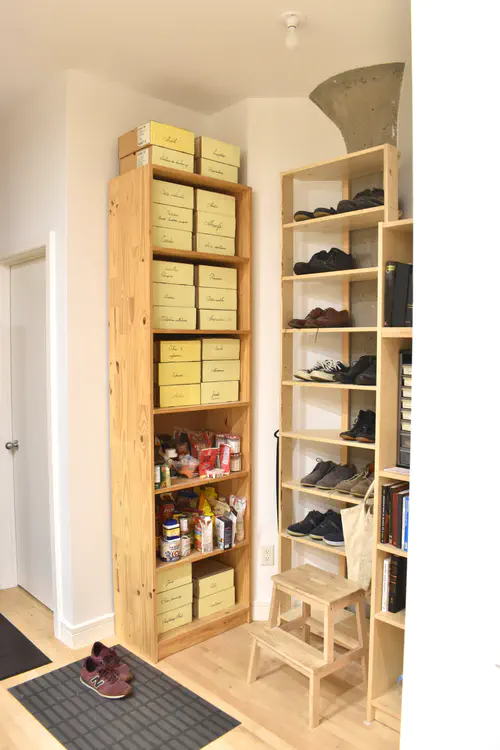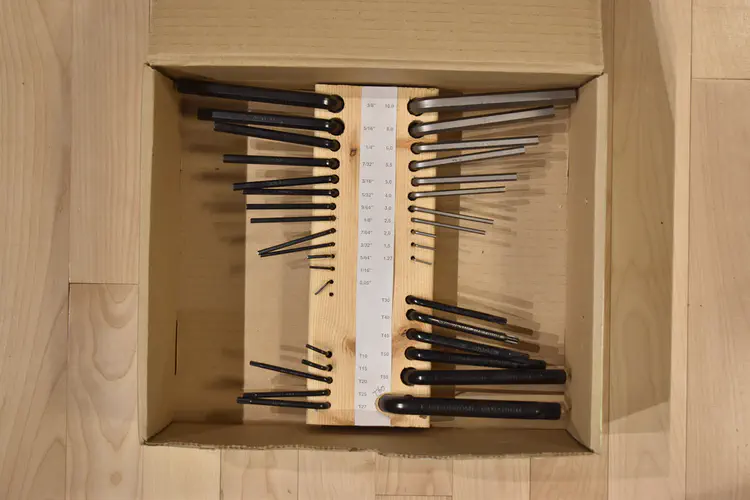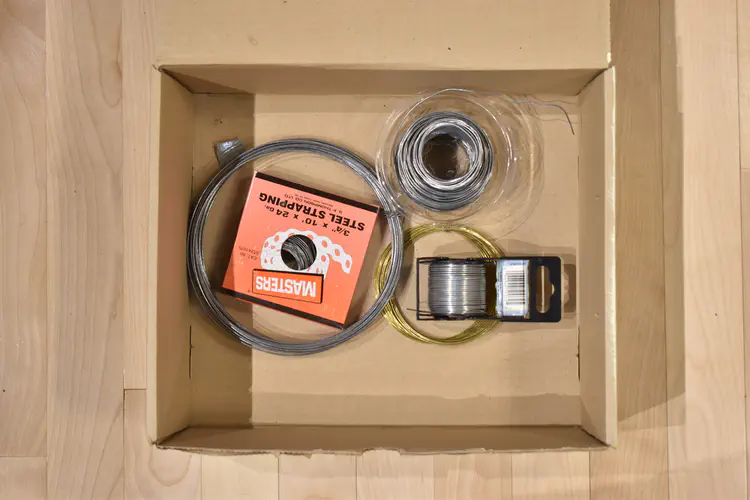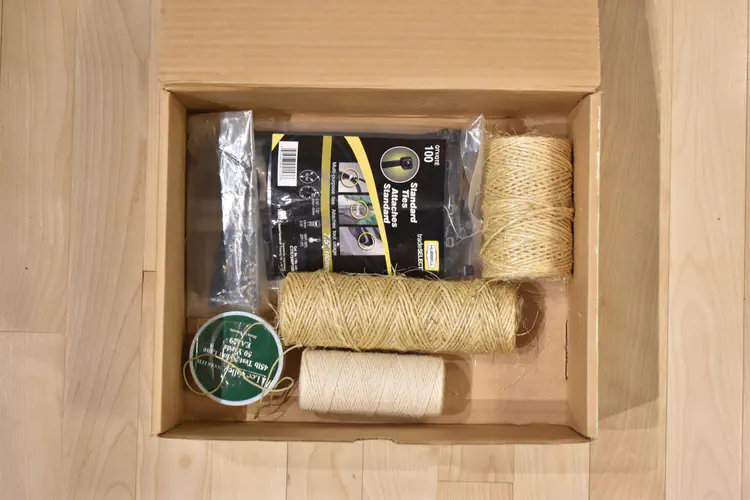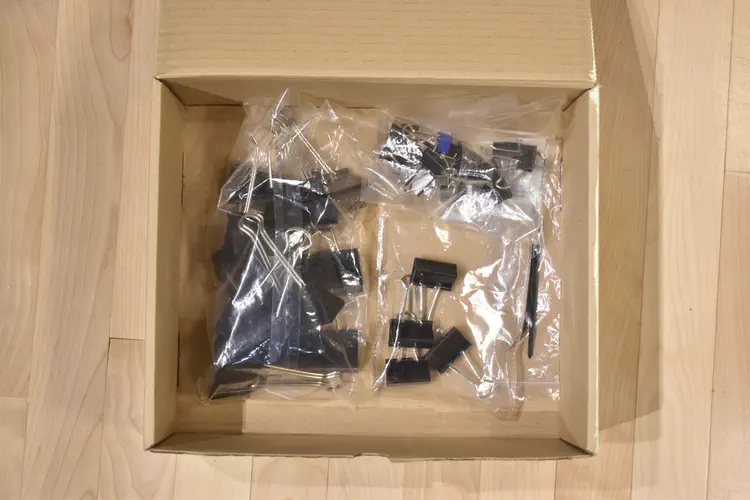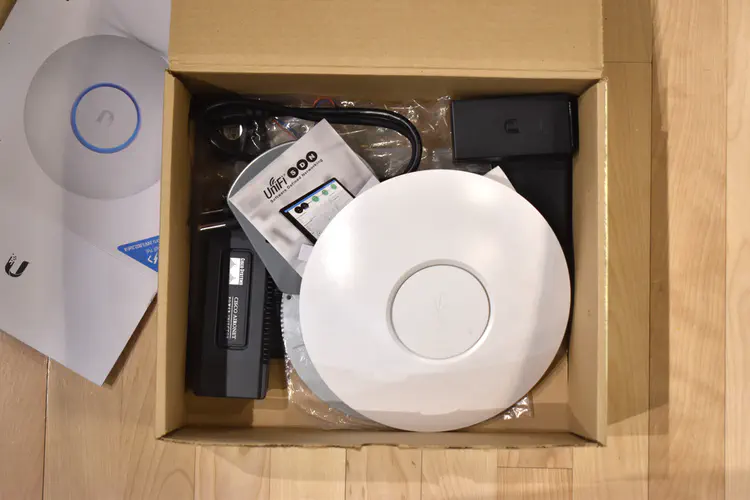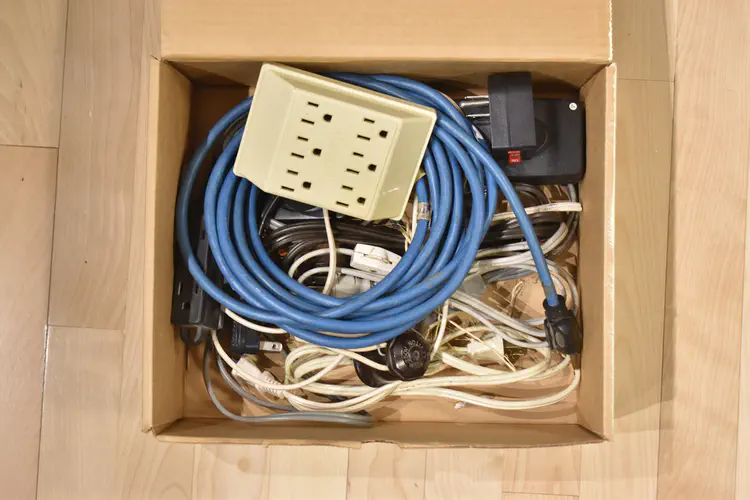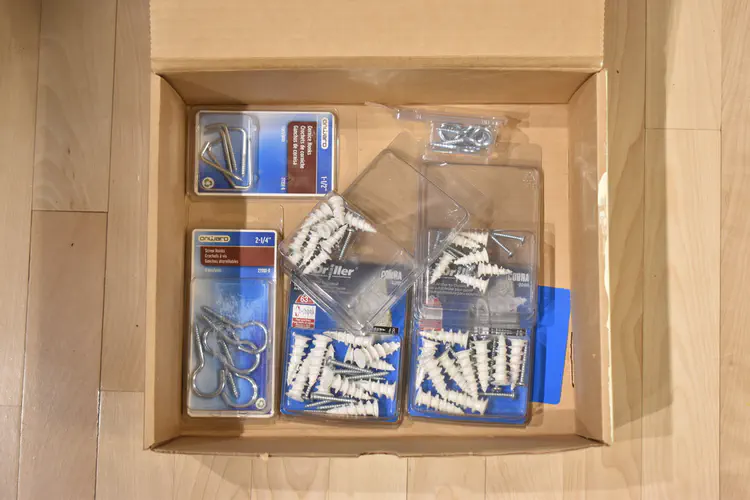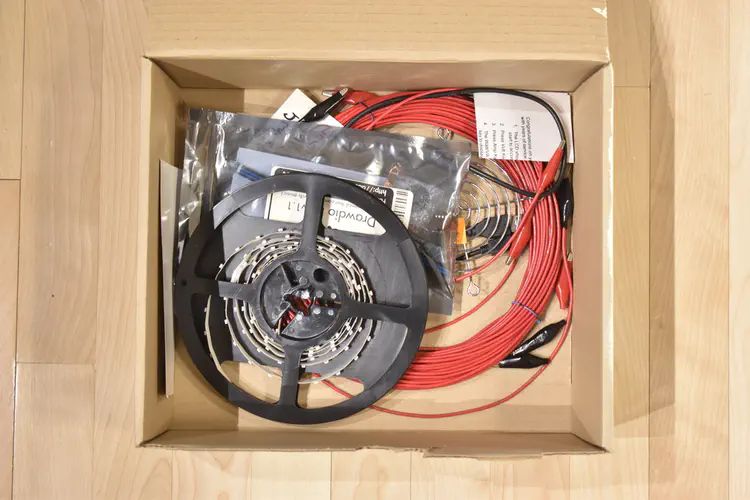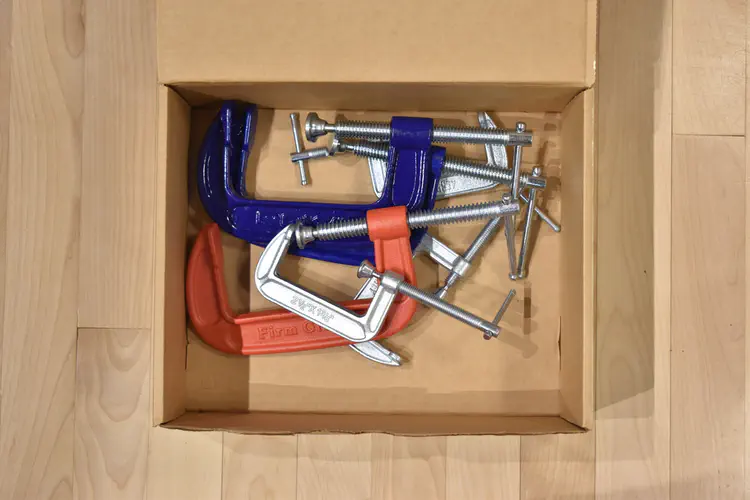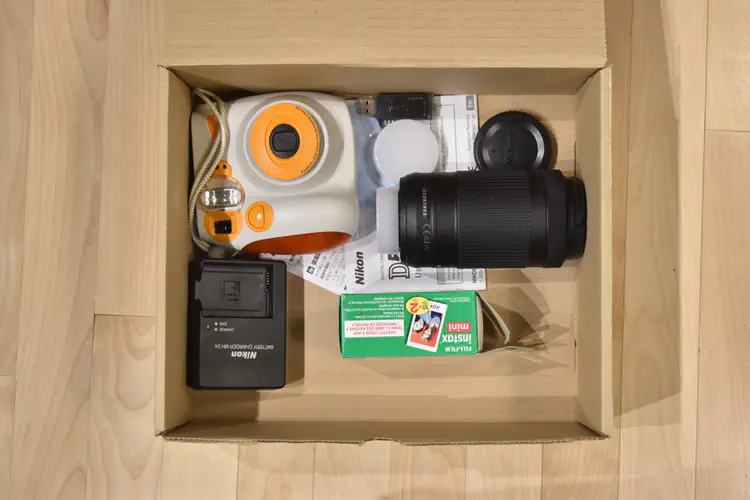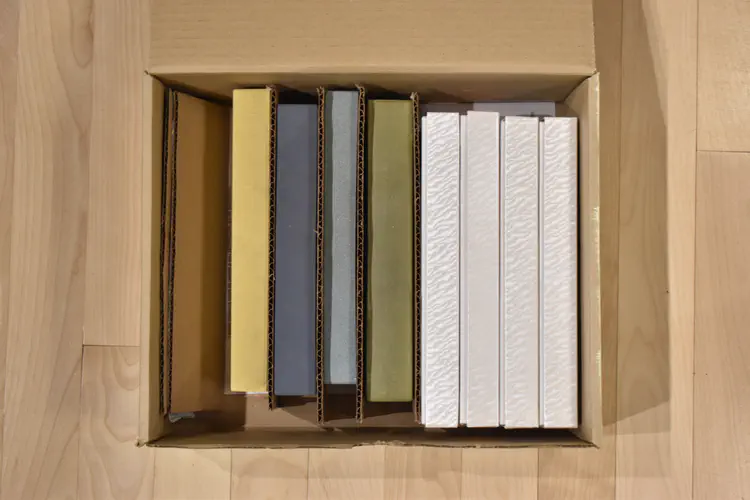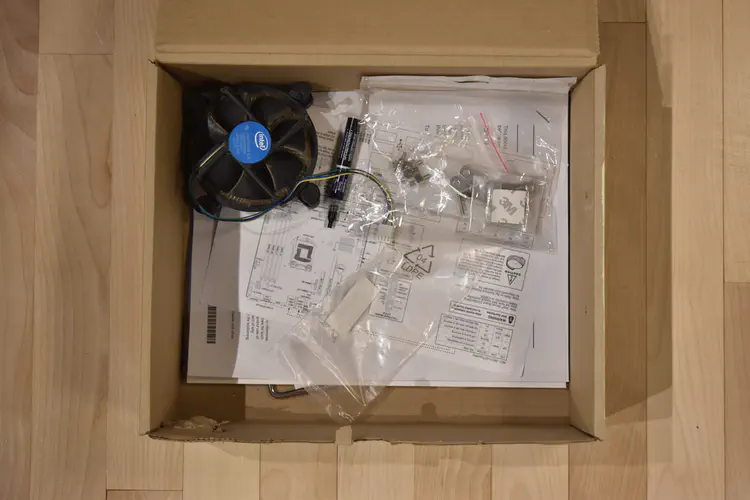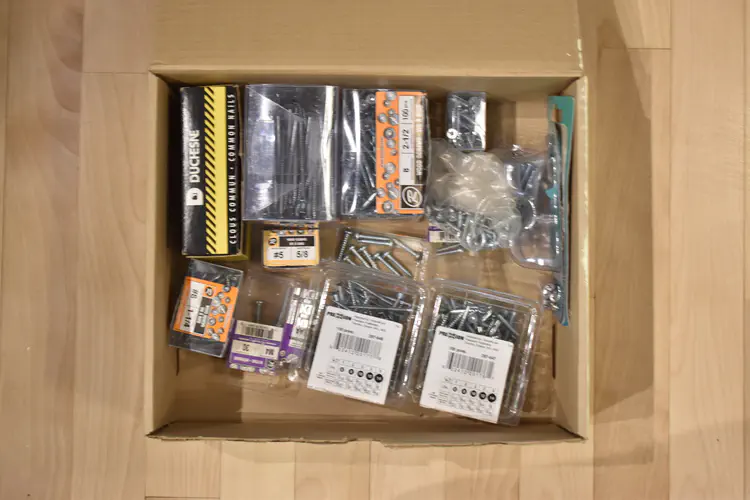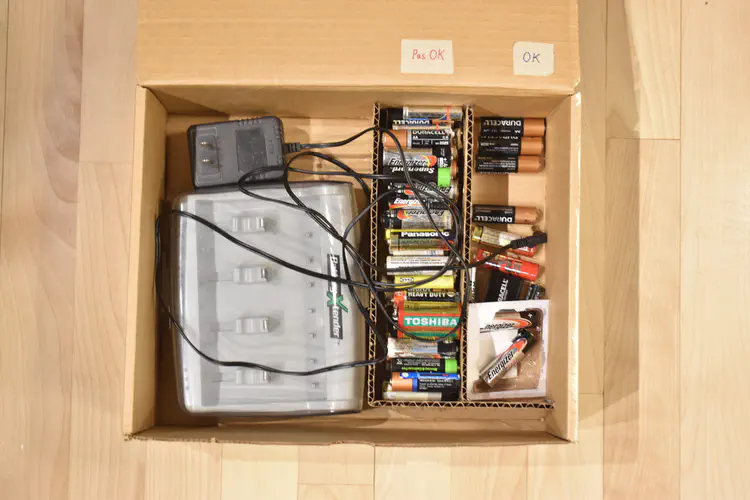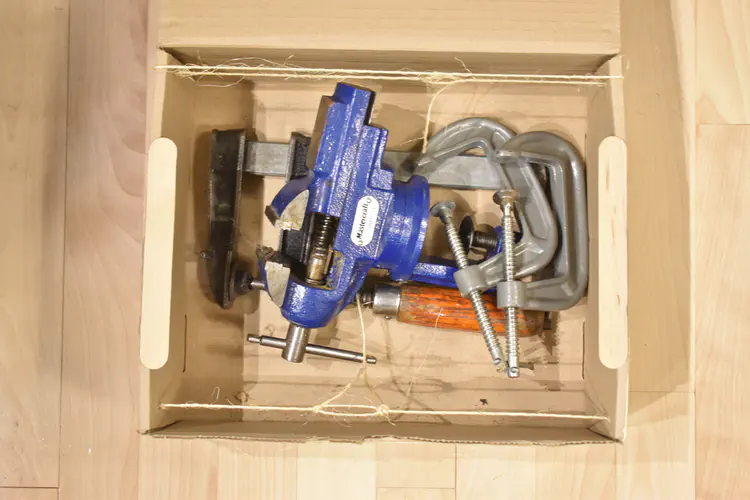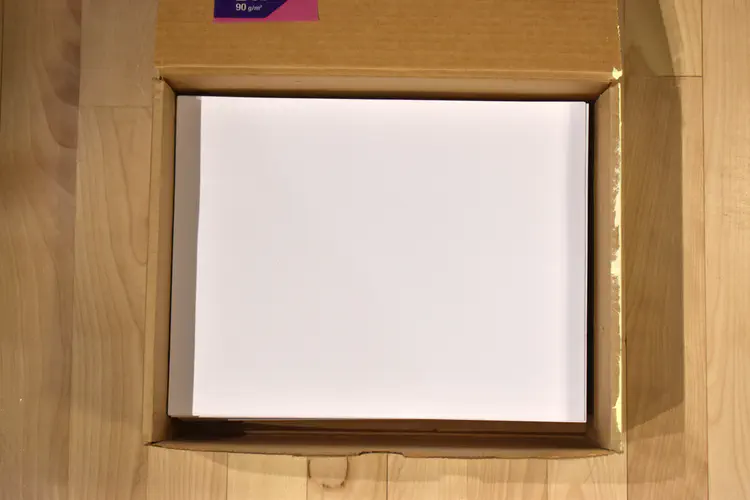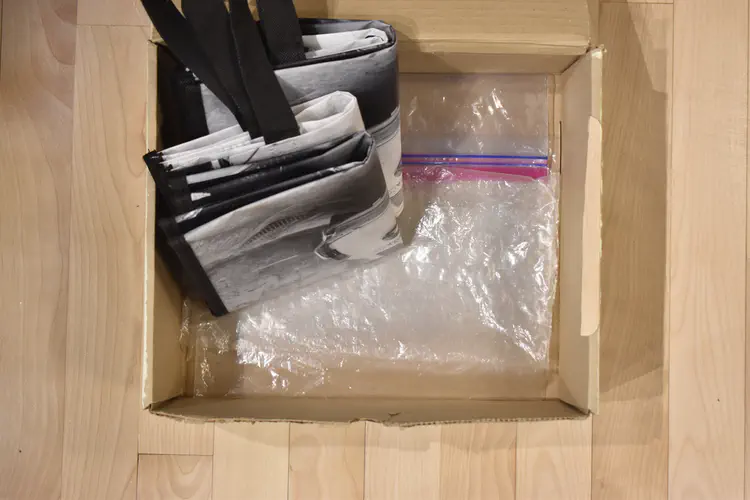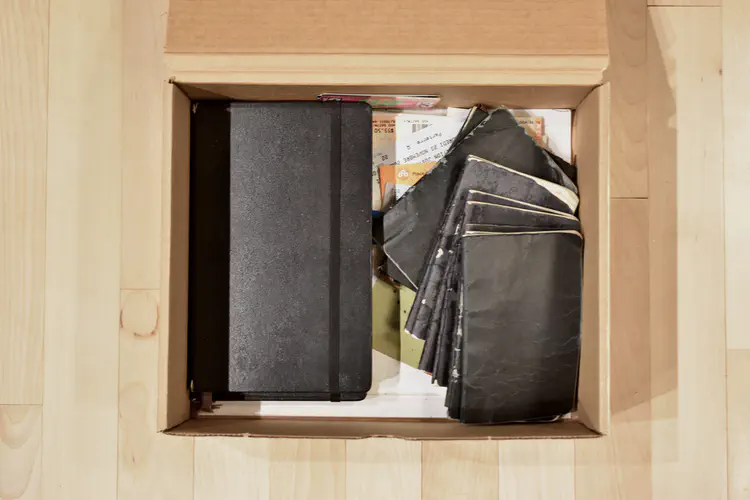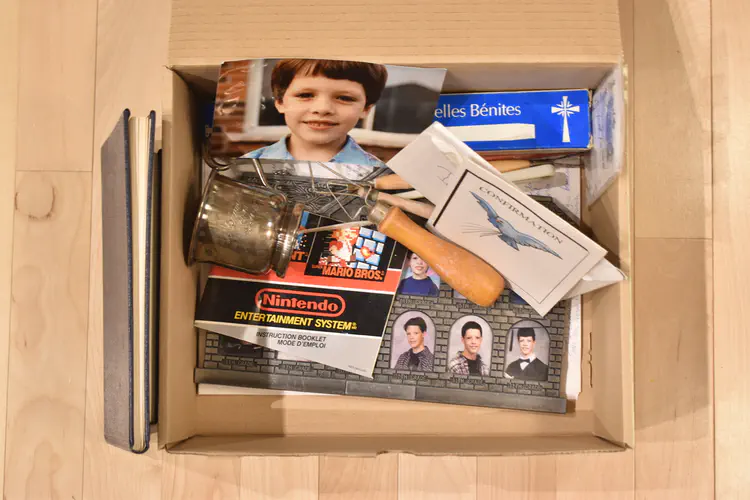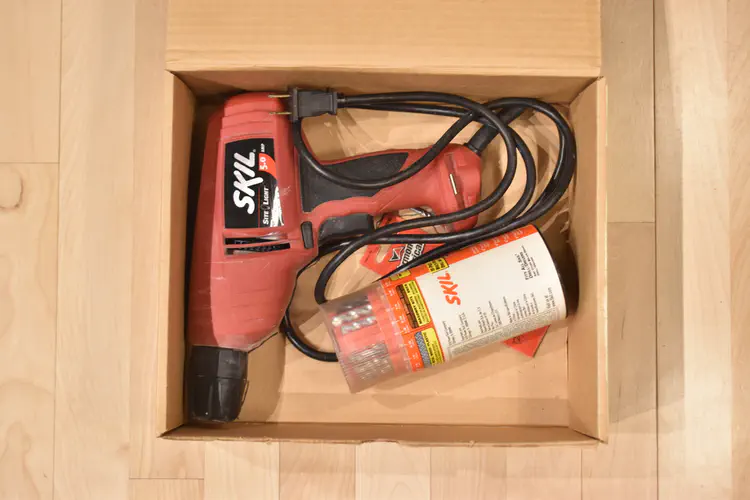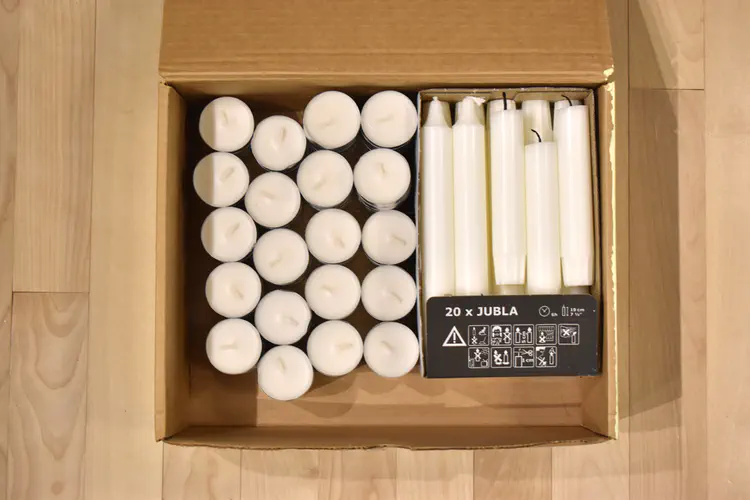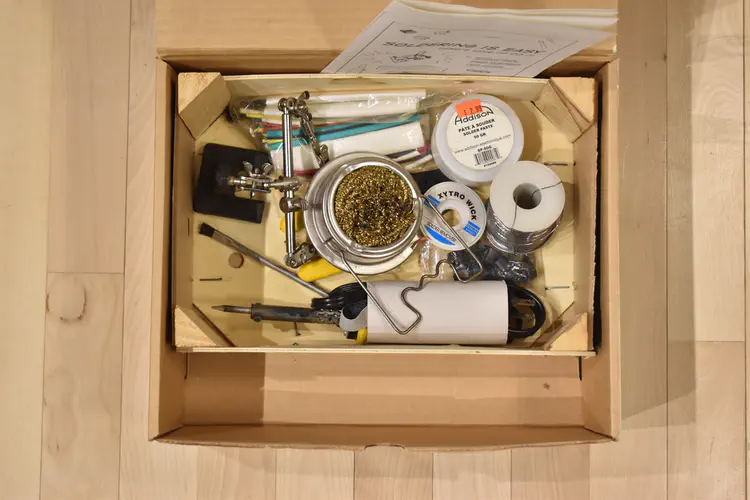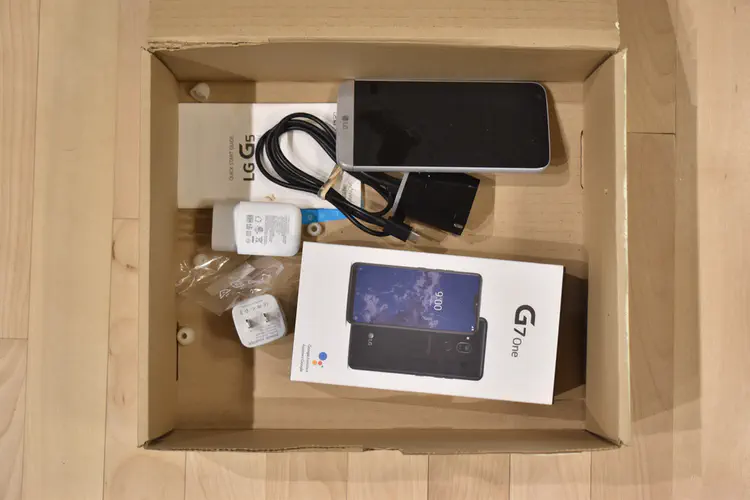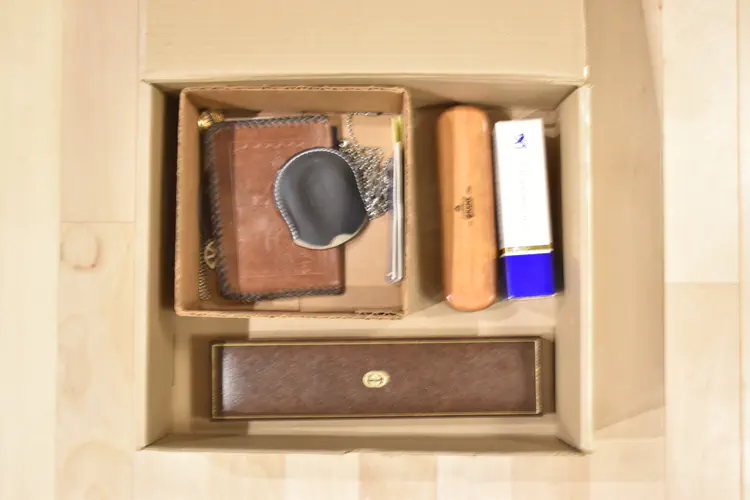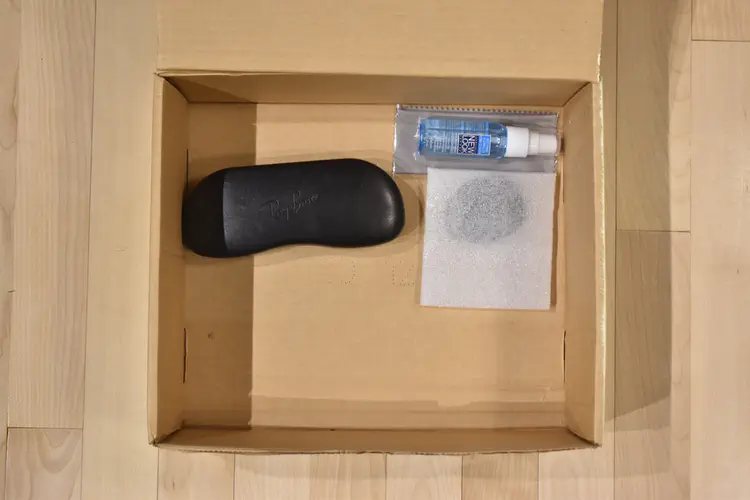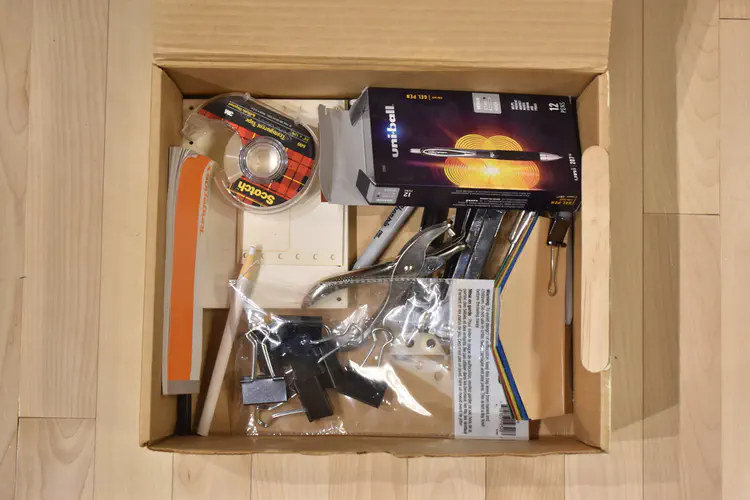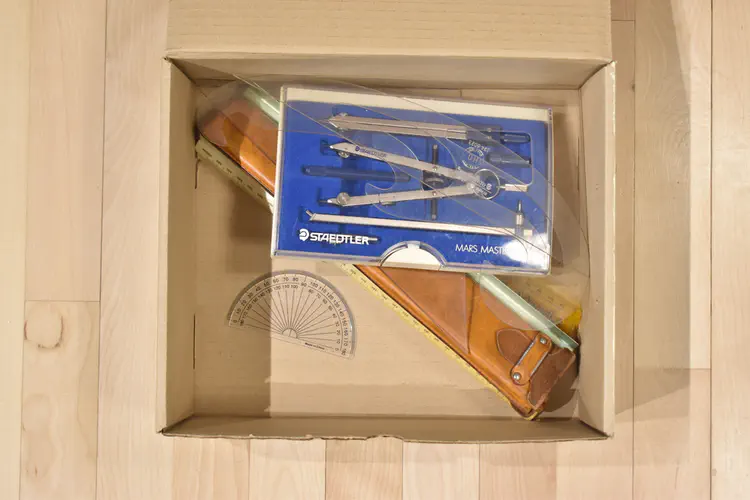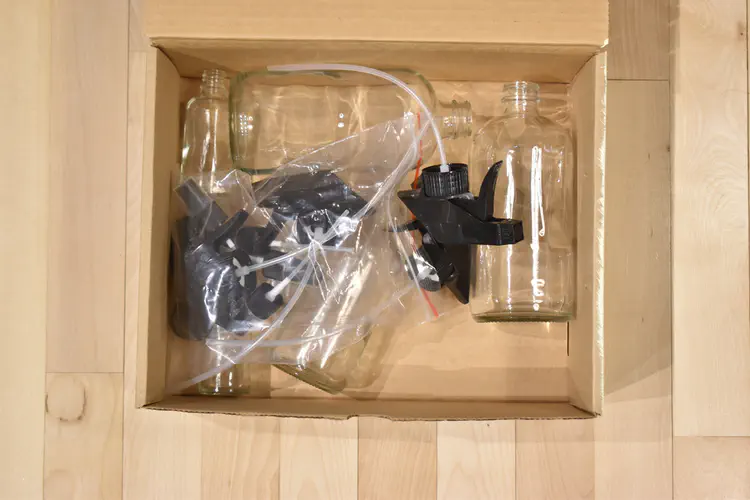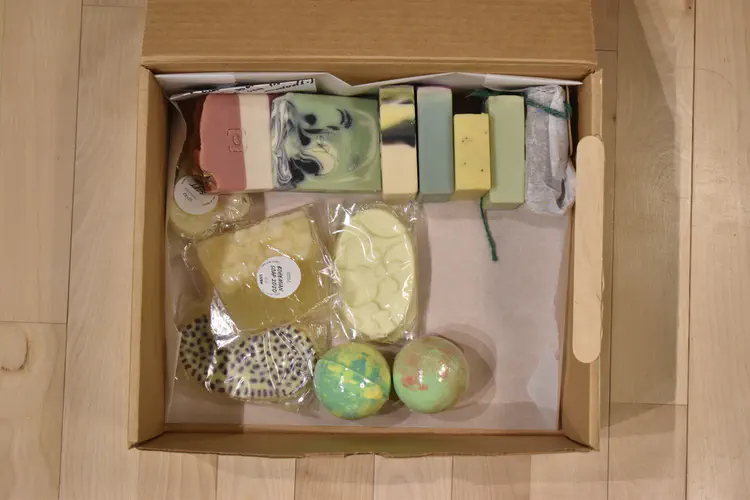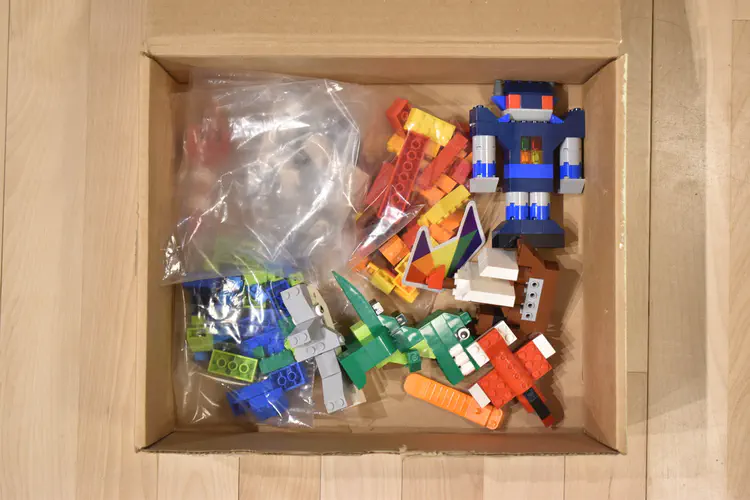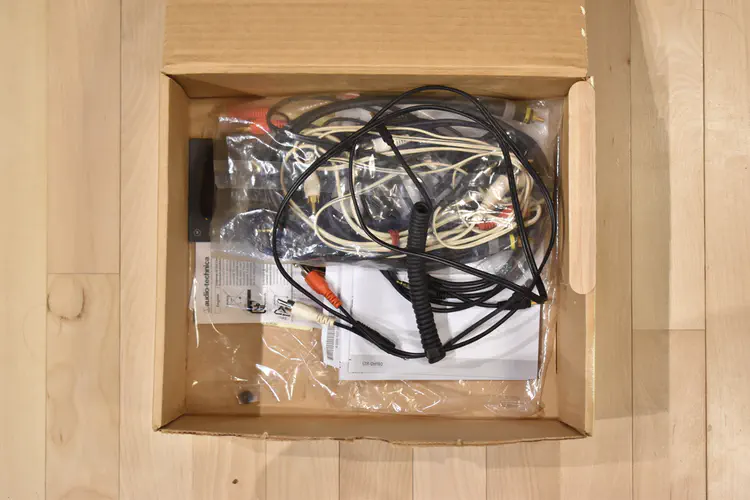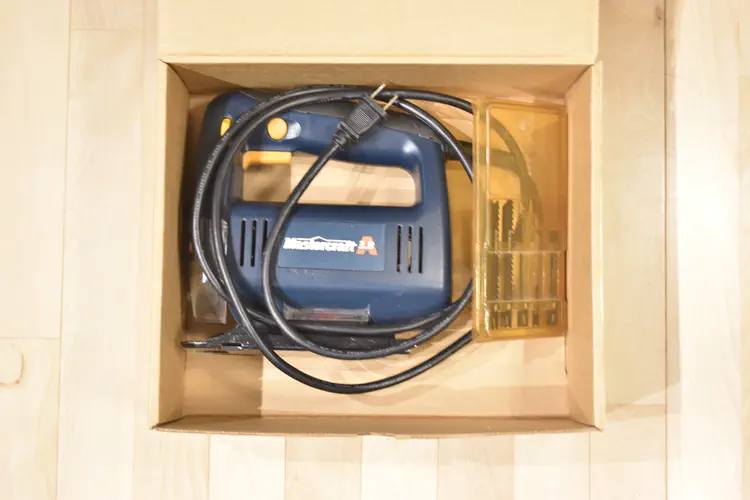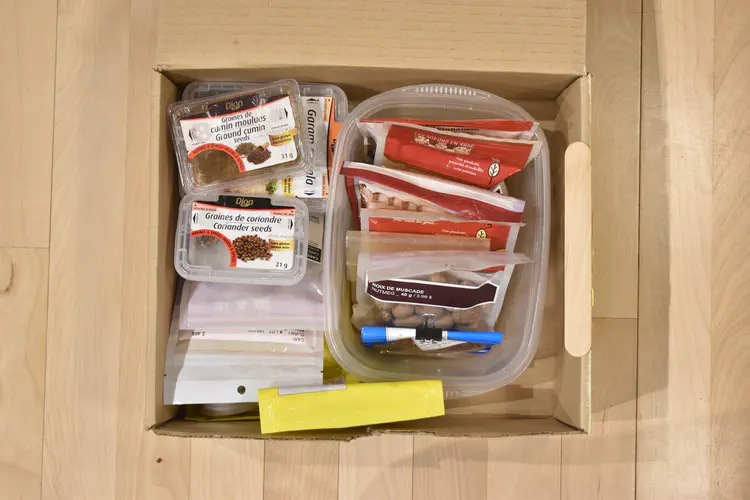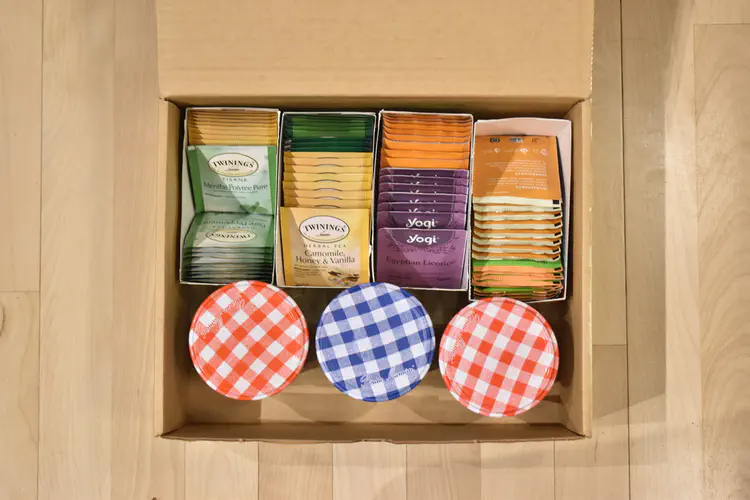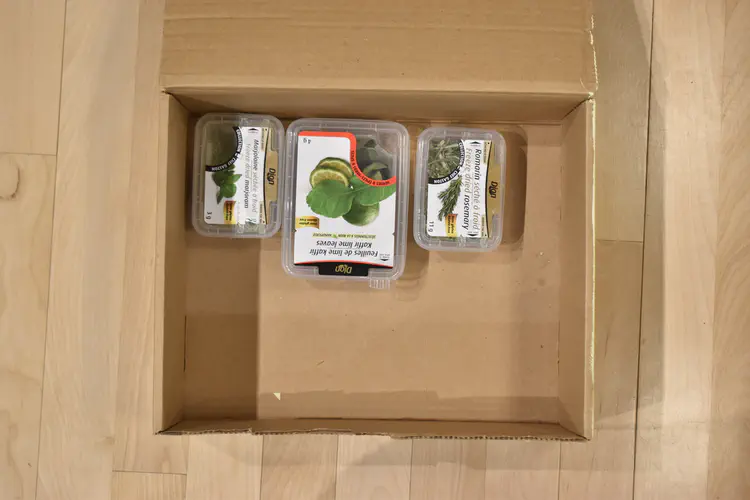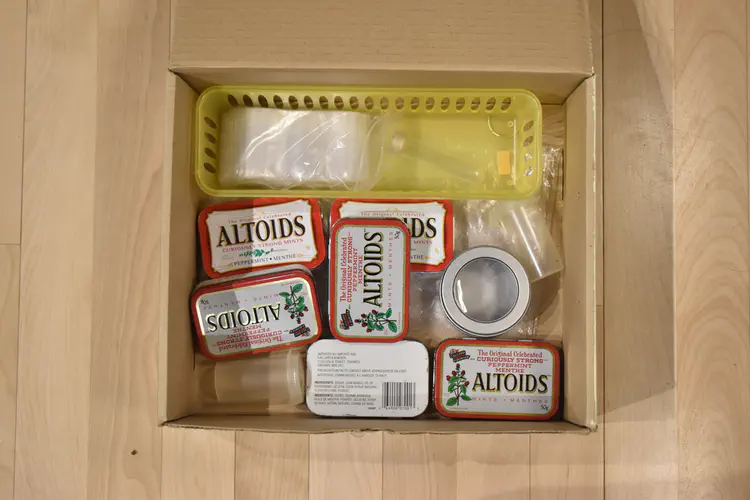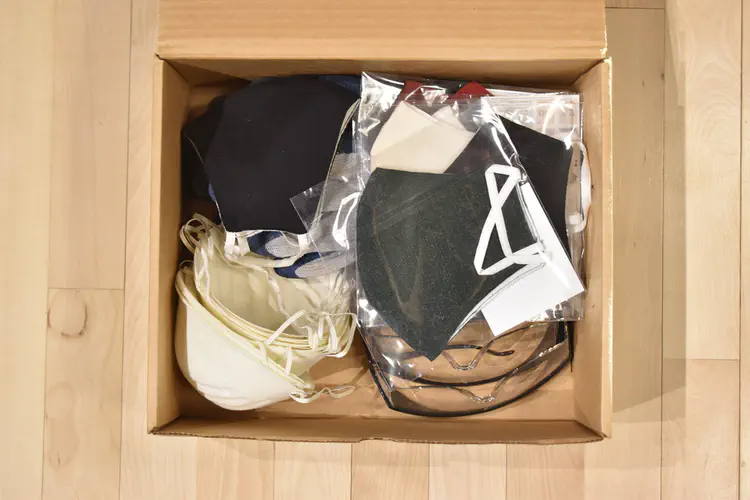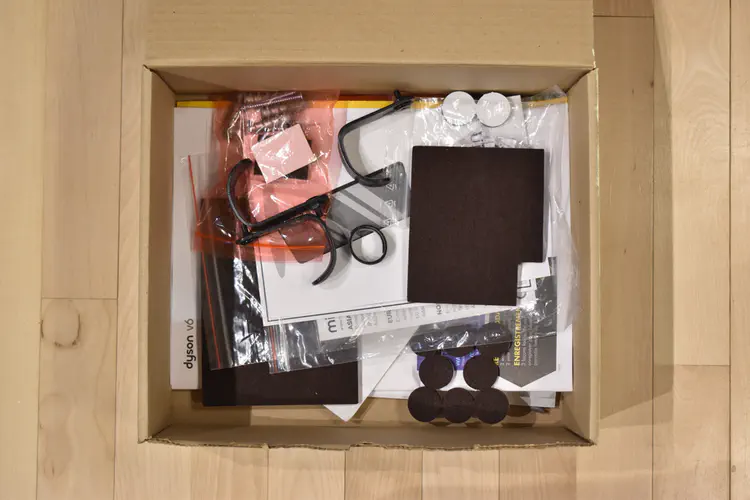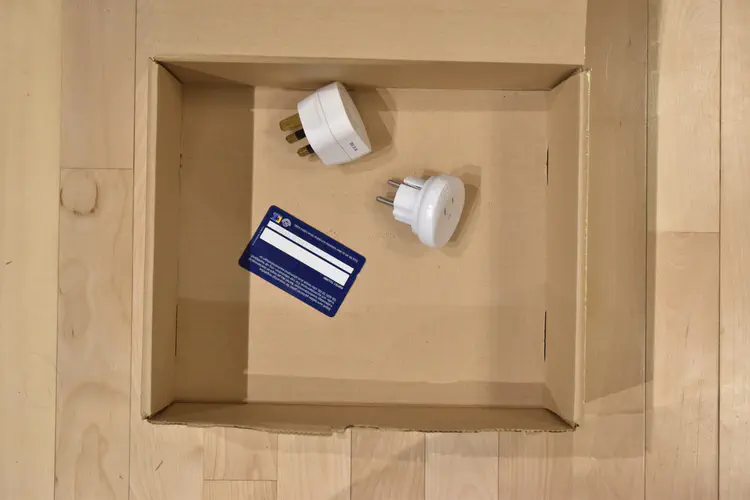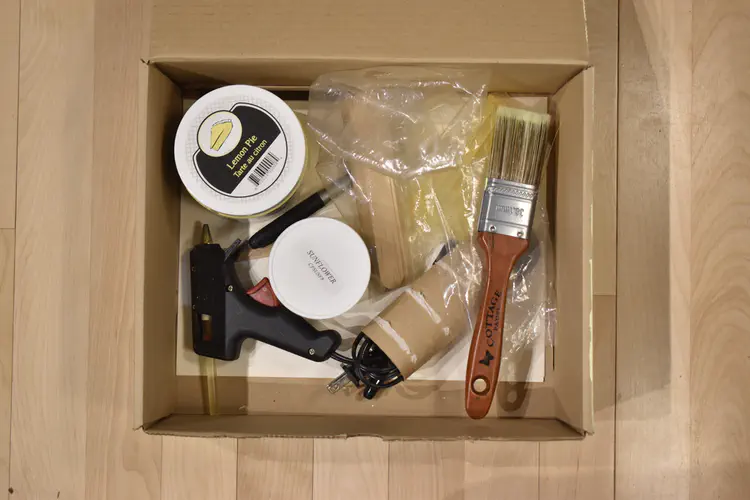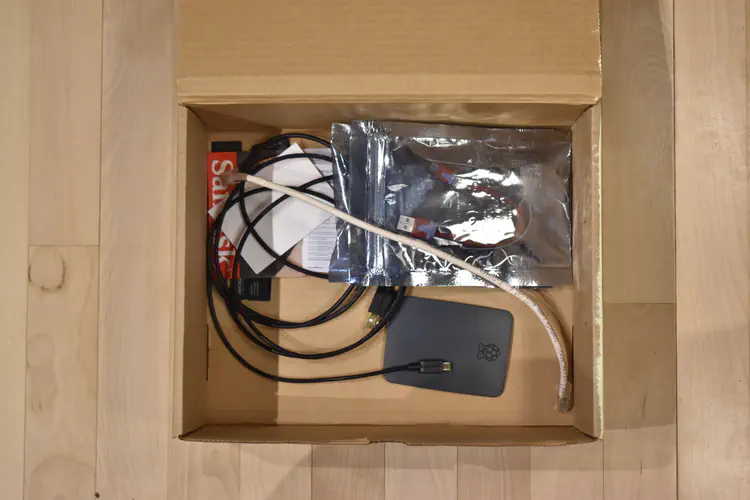A place for every thing
Home organisation system documentation
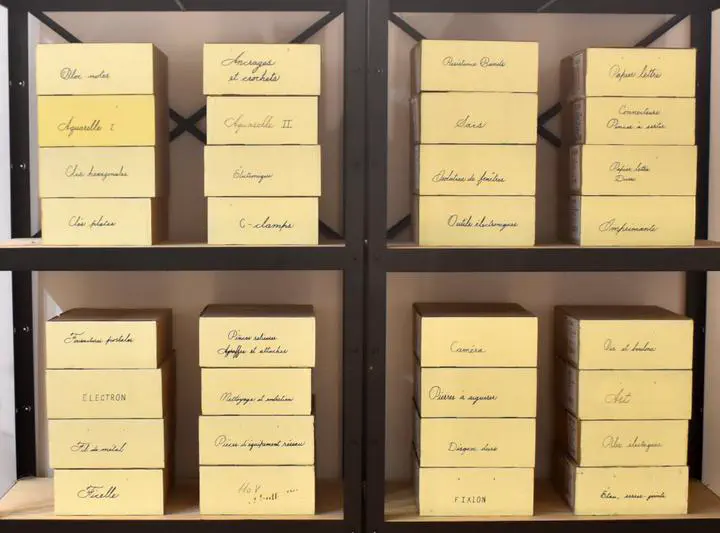
Introduction
When people see my apartment, they wonder about the boxes.
I am told my apartment is clean, orderly, organized, functional. I like that it’s more than just a place to chill. It’s a facility, an infrastructure that supports my projects and activities.
It hasn’t always been like that. In college, I shared an apartment with three roommates and I was the untidy one. My room was messy, I left the kitchen disgusting, and I didn’t know how to organize papers.
Becoming an organized person took lots of willpower, research, effort and determination. Being organized is a process.
I want to share with you a system that I’ve been testing, improving and living with for over a decade. I describe it at length, but the principles should be intuitive to grasp with a little bit of imagination and spatial geometry. My advice is you should get 100 cheap boxes to organize your things.
Principles of home organization
In common wisdom, there are two principles of home organization:
- A place for every thing.
- Everything in its place.
Don’t be fooled by the simplicity of the idea. We all know it’s very hard to have an organized home. That’s why there are thousands of self-help and inspiration books and websites on this topic.
Here’s how I can help. The hard part is creating a place for every thing. I came up with my own system to create a place for almost everything very easily, inexpensively, and aesthetically. It’s easy to put everything in its place when every thing has a place.
Strategy
The strategy is to store 80% of your objects (by unit count, not by volume or mass) in boxes of a standard size.
All the boxes should be of the same size. Finding the optimum size is a function of:
- The dimensions of the 80th percentile object by volume.
- Storage volume density.
- Stacking, swapping and shifting operations.
- Fitting in eclectic furniture and small apartment spaces.
- Aesthetics.
- Cost per box: right quantity of boxes and volume discount.
In other words, we are not trying to fit everything. We are trying to solve 80 % of the problem of organizing things in your house. The standard box should be big enough for the smallest 80 % of your things, which are likely things of the size that fit in human hands.
Supplier
Instead of buying decorative boxes made in plastic or fabric, I suggest getting simple and affordable corrugated cardboard boxes! Quantity is important. The uniformity and a labelling system will make things pretty. Look for a supplier of industrial packaging and shipping material instead of a retail store.
I’m in North America, and I ordered from Uline.ca
https://www.uline.ca/
Short list of boxes products:
- 12 × 10 × 4” (30 × 25 × 10 cm) White Literature Mailers
- 12 × 10 × 4” (30 × 25 × 10 cm) Kraft Literature Mailers ← recommended
- 12 × 10 × 6” (30 × 25 × 15 cm) White Tab Locking Literature Mailers
- 12 × 10 × 6” (30 × 25 × 15 cm) Kraft Tab Locking Literature Mailers
Form factors analysis
Here is a quick comparison of the two candidate box formats.
- 12 × 10 × 4”
- Approximately the size of the boxes in my apartment that I got for free 10 years ago.
- Fits letter paper comfortably.
- 12 × 10 × 6”
- Fits letter paper comfortably.
- Tab locking, meaning opening and closing involves more fine motor actions.
- Tabs could be cut off.
- I haven’t tested this form factor and closure type.
- Higher than what I currently have.
- Some of my furniture is optimized for multiples of 4” H boxes so 6” is not optimal for me.
- Less average storage density but can fit higher objects.
Number of boxes needed for one house
The number of boxes that I need seem to fluctuate between 75 to 80. In addition, I like to keep a buffer of empty boxes for expansion and contraction.
100 is a reasonable amount of boxes. This will create a place for 80% of your things in a way that is aesthetically pleasing and evolves with you and your possessions over time.
I’m not sure how to estimate boxes needed for a couple or a family, but I’m sure it’s a little more complex than multiplying 100 by the number of persons in the household. Many objects and supplies in a household are shared. I estimate there could be about 50% of the one-person-apartment boxes would belong to the “shared” stock in a family. I also think a 25% extra boxes is a good buffer for expansion and replacing a few damaged boxes over the years from moving and shuffling. Therefore, my hypothesis formula is:
required number of boxes = (40 + 40p) × 1.25
…where p is the number of people in the household.
Methodology for finding the optimal box dimension
I describe how I came up with my recommended size of 12 × 10 × 4½”.
There is a limited choice of predetermined box sizes and types, so there is no benefit to elaborating a precise formula. By applying just a few filters, we quickly narrow down our choice to 1 box from the Uline catalogue.
Selection filters:
- It has to fit US letter paper (8½” × 11”) easily.
- It can’t be much larger otherwise it becomes difficult to handle and to use in small spaces.
- Based on my personal experience with 12 × 10 × 4½”, I have a feeling this is the right size and I am looking for something as close to this as possible.
There are two sizes that are close enough.
- 10 × 12 × 4” Literature Mailer
- 10 × 12 × 6” Tab Locking Literature Mailer
The 4” H box is big enough for most of the random objects and tools in the house.
The 6” box is too high. For just a handful of additional bigger objects that can fit, it’s not worth making 60 to 70 other boxes 2” higher. It only comes in Tab Locking style, requiring more fine motor movements to open and close.
Recommended box model
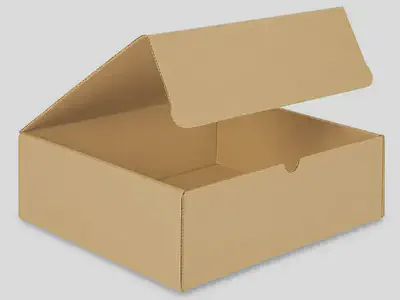
Colours
White style is more expensive. There is a 12-14 % premium for White Literature Mailers (4” H) and 6 % premium for White Tab Locking Literature Mailers (6” H). I suggest going with Kraft colour. It has a calming earthy tone. It’s easy to paint on.
Storage density
Storage density is the ratio of storage volume occupied by objects. The rest is air. The storage density of heterogeneous objects in uniform boxes may not seem very high, but there is a tradeoff.
The highest storage density is obtained when filling boxes with objects up to maximum capacity. However, this is not what we are optimizing for and this doesn’t make the system efficient. What we are optimizing for is storage and retrieval.
By storing objects by type or by category, it is possible to apply a label system for easy content identification and retrieval. We use a bit more space, but we make the space our friend.
If the boxes are of uniform size, the lower storage density per box can be offset by two additional benefits:
- Boxes stack neatly in stable and manoeuvrable columns, utilizing vertical space as best as possible.
- The fact that boxes can be swapped means the most frequently used boxes “migrate” towards the location where they are used. Also, seasonal boxes can be rotate towards and away from high activity locations.
Prices analysis
Boxes are sold in bundles of 50.
The prices for 10 × 12 × 4” Literature Mailers are:
- 1.91 $/box for 50 boxes,
- 1.78 $/box for 100 boxes or more (6.8 % discount),
- 1.49 $/box for 500 boxes or more (22 % discount).
Cost, volume discount and group purchase
The volume discount become interesting at 500 boxes.
For one person to buy 100 boxes costs 178 $.
For one person to buy 150 boxes costs 267 $.
For three persons to buy 500 boxes costs 745 $, or 248 $ per person for 166 boxes.
For four persons to buy 500 boxes costs 745 $, or 186 $ per person for 125 boxes.
For five persons to buy 500 boxes costs 745 $, or 149 $ per person for 100 boxes.
Shipping costs
Scenarios of shipping cost from Milton ON (Uline locations) to Montréal QC.
| Number of boxes | Price per boxes | Total cost | UPS Standard | Cost per box including shipping | Total cost including shipping |
|---|---|---|---|---|---|
| 50 | 1.91 $ | 95.50 $ | 41.84 $ | 2.75 $ | 137.34 $ |
| 100 | 1.78 $ | 178.00 $ | 72.68 $ | 2.51 $ | 250.68 $ |
| 150 | 1.78 $ | 267.00 $ | 98.38 $ | 2.44 $ | 365.38 $ |
| 200 | 1.78 $ | 356.00 $ | 122.70 $ | 2.39 $ | 478.70 $ |
| 250 | 1.78 $ | 445.00 $ | 153.13 $ | 2.39 $ | 598.13 $ |
Labeling
I use cottage paint (aka furniture restoration paint, aka clay paint, but it’s water based). They have a nice pastel chalky look.
I have a box labelled “Boxes processing”. This is where I keep a jar of paint, a paint brush, a black marker and a glue gun for repairs. When I empty some boxes, I stack them in a pile of boxes “to relabel”. I batch process them by painting over the old black marker label and add them to a reserve of “ready to use” boxes. When I need a box, I can just reach for a blank empty box, and write the label on it with a black marker.
The choice of label material and tools is important because it contributes to the aesthetics and the ease of retrieving items. It must also make it efficient to prepare new boxes.
You can use a mechanical or digital label maker, or use label holders: Plastic Label Holders - Adhesive Back.
Paint
I used and loved Cottage Paint Sunflower. Last year I had difficulty finding it in stores and online. I purchased Colorantic Lemon Pie as a replacement. I still prefer Cottage Paint Sunflower because it’s brighter.

Operational guidelines
- All boxes should be labelled and opened on the same side. This makes the motions for opening and closing boxes entirely procedural and unconscious.
- Stack heights should be inversely proportional to frequency of access. In frequent access zones, stack 3 or 4 boxes maximum, and use shelves to use more vertical space. In less frequently accessed zones, stacks can be higher.
- An appartment is divided in storage “pods”. Storage pods are shelves, upper cabinets, closets, etc. where boxes can fit. In a pod, there should be about 20% “shuffle space” or at least 3 boxes of empty space. This allows you to play Tower of Hanoi with your boxes.
Project mode and cleanup
My box system is in project mode is when I am working on something physical, and I open multiple boxes while working on that project.
Example projects and the boxes that I open:
- Doing watercolor
- Watercolor box
- Paper, brushes and other tools and supplies that do not fit in boxes.
- Installing a shelf
- Boxes:
- Electric jigsaw
- Electric drill
- Abrasives
- Screws, nuts and bolts
- Paint brush
- Not boxes:
- Wood
- Hardware
- Extension chord
- Varnish
- House cleaning material
- Boxes:
It doesn’t matter if project mode generates lots of open boxes and objects lying around. Because there is a place for everything, it is very straightforward to put everything in its place.
There is a measurement unit of cleanliness: it’s the amount of time it would take you to bring your space to a dazzling and inviting room vibe. I try to keep my apartment at an average level of 30 mtd (minutes to dazzle). There is no upper limit to the mtd scale. If you are a hoarder and your case is desperate, you could be at ∞ mtd. You should burn it all and start over, and get a therapist or a coach.
A good measurement of how well a living space organization system does to improve life is a low mtd in worst reasonable situation. Here’s a proof of how effective my system is.
Project mode is when my apartment is the most cluttered. There is wood, varnish, paper, tools, supplies and open boxes all over my studio. With my system, that scenario is measured at 60 mtd. This means even when I turn my apartment into a workshop for a weekend, with tens of objects organically placed all about the space, once I finish my project, I can put everything in its place and get the space in a dazzling condition in about one hour!
Examples of box labels
One frequent question I get when I explain my boxes system is “What do you have 100 boxes for?”
Here are ~50 examples, organized by category:
- Supplies
- Metal wires
- String
- Rope
- Binder clips
- Small containers (baggies, boxes, pill canisters)
- Postal supplies
- Office supplies
- Printer paper
- Crafting paper
- Stationery
- Batteries
- LED bulbs
- Tape
- Activities
- Art
- Watercolor
- Network wiring
- Games
- Bicycle
- Sewing
- Christmas
- Travel
- Minerals (decorative)
- Boxes processing
- Tools
- Sharpening stones
- DSLR Camera
- C-clamps
- Resistance bands
- Electronic tools
- Allen keys
- Hexagon keys
- Electric drill
- Electric jig saw
- Abrasives
- Hardware
- Anchors and hooks
- Screws, bolts and nuts
- Spare parts and manuals
- Printer
- Appartment pieces
- Computer
- Raspberry Pis
- Food
- Tea
- Spices (overstock, counter top spice jars get refilled from here)
- Herbs
- Personal
- Soap
- Pharmacy
- Medication
- Glasses
- Bouldering shoes
- Clothing accessories—Smart
- Clothing accessories—Formal
- Archival
- Journal (memories, divided by life phases)
- Art
- Hard drives
- Paper cuttings
Picture gallery of the system in my apartment
The furniture, closets and cabinets in a house create storage zones (or “pods”).
Picture gallery of boxes contents
Moving with boxes
When moving, 80 % of my things are already in boxes and don’t need to be packed. I use sisal string to tie boxes in stacks of 4.
A second form factor
In this section, I describe how I added a second box form-factor to my system.
In June 2018, I was moving to a new apartment and I bought larger boxes. These ones were 12 × 12 × 12”. I bought two packs of ten moving boxes at a local RONA home hardware store.

This second bigger form factor was perfect for organizing and transporting the remaining 80% of my things, thus storing up to 96 % of my things altogether (80 % of my things in small boxes, plus 80 % of the remaining things (16 % of the total) in big boxes). At the same time, they are small enough to keep as a permanent resource for my storage system.
Their usage is sometimes temporary, for moving or for seasonal items. Their frequency of access is also lower. The labels are larger and have 5 thin lines to write on. This allows crossing off items when boxes are repurposed, without needing to paint the box. It also allows storing multiple types of items together, to obtain a higher storage density.
Math
Here’s a graph that shows the cumulative volume of storage. The source data is made up from the following assumptions:
- I have 100 boxes of 10 × 12 × 14”.
- They are filled at an average of 50 % volume capacity.
- I also have 20 boxes of 12 × 12 × 12”.
- These are filled at 80 % volume capacity.
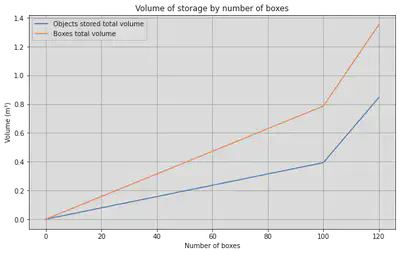
As we can see here, because of the low storage density, 0.8 m3 of boxes only stores 0.4 m3 of stuff. But we know better than to cram as much stuff as we can in any random junk box. The goal is to store and retrieve objects efficiently, and use vertical space by stacking boxes of equal size.
When moving or for storing less frequently accessed things, a few boxes of larger size and filled closer to capacity will organize a significant proportion of the remaining number of things you own.
Cubic metre
When I created the spreadsheet and generated the graph, I was surprised my boxes system would store less than 1 m3 of things. Then I looked up YouTube videos to help me understand what a square meter looks like, and it’s pretty big, so the ~1m3 order of magnitude make sense.
Small objects
For small objects, I value using a small drawer storage cabinet. I found that labels are better than relying on the boxes transparency. I even started making drawings of the contents instead of writing out the names because it makes it faster to find what I’m looking for. It contains various office supplies, hardware, and personal items.
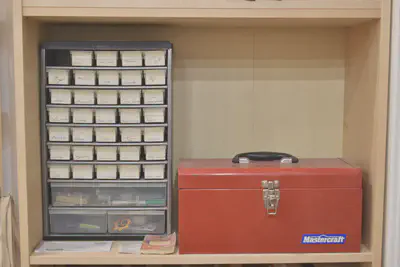
The red toolbox in the picture is a single-purpose box and it’s an exception I allow in my system. It’s the right size for a basic tool kit, it’s metallic, and it’s red :) The overhead space is not really wasted because I access the content of my toolbox often enough.
Food jars
I have a similar system of standard sized jars for food. Here are a few pictures. I might document this in more details later. Right now I am still experimenting.
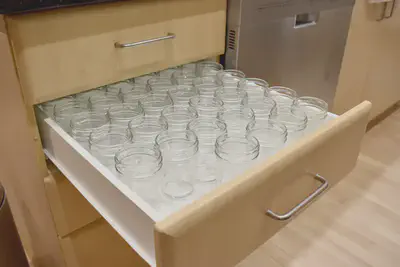
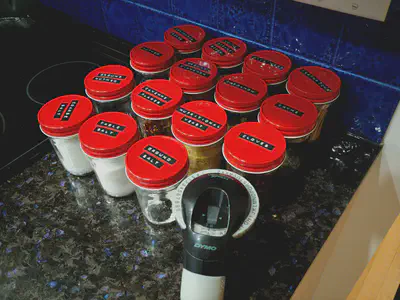
See also
- Corrugated box design on Wikipedia.

